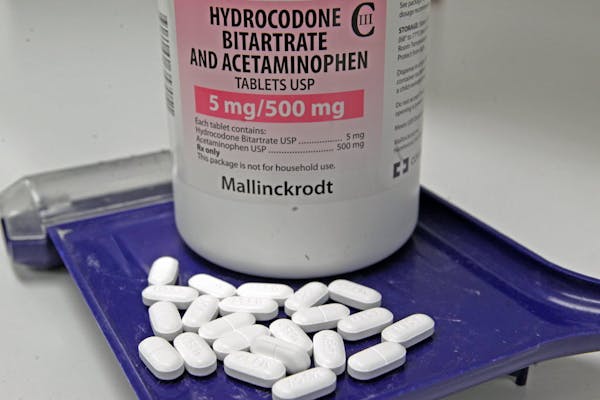Mental health professionals understand the potentially lifesaving power of the right medications prescribed well. Not too strong a dose, not too weak. Not necessarily forever, and preferably used in concert with talk therapy, exercise, meaningful work and supportive relationships.
So it's no surprise that many in their ranks reacted to a recent report with a healthy dose of horror.
Almost 20,000 prescriptions for antipsychotic medications were written in 2014 for children ages 2 and younger.
You read that right.
That's a 50 percent jump from 13,000 prescriptions the year before, according to IMS Health, a health care data company.
IMS unearthed the troubling data at the request of the New York Times, which was investigating growing concern that pill therapy was, in fact, reaching the toddler set.
IMS found that at least 10,000 children, ages 2 and 3, were prescribed medications such as Adderall to treat attention deficit hyperactivity disorder (ADHD). The protocol falls outside of American Academy of Pediatrics guidelines. Children younger than age 2 received prescriptions for risperidone (commonly known as Risperdal), quetiapine (Seroquel) and the antidepressant Prozac.
The report did note the possibility that some medications are being used by parents who have no health insurance for themselves. And some psychiatric medications, such as the anti-anxiety drugs Valium and Klonopin, are widely accepted to control intractable seizures in the very young.
Still, questions loom: Who is doing the prescribing?
What might these powerful medications do to a delicate and developing brain?
And how do doctors help desperate parents find safer alternatives?
"The use of antipsychotics is generally not considered standard of care in those under the age of 2," said Hennepin County Medical Center psychiatrist Dr. John Wermager, who called the findings "eye-opening and alarming."
He added, "Usually, medications are one of the last lines of treatment utilized."
Newer antipsychotic drugs, such as aripiprazole (Abilify), have shown promise in the treatment of self-harming children on the autism spectrum, he said. But those children are at least 4 years old.
"I share the opinion with most child and adolescent psychiatric providers that the first and best interventions involve changing the environment of the child or engaging in therapeutic endeavors," he said.
Dr. Carrie Marie Borchardt, medical director of psychiatry services at Children's Hospitals and Clinics of Minnesota, also was surprised by the findings.
"I asked my colleagues here, and none of us have ever prescribed an antipsychotic drug for a child that young, and I've been in practice for 28 years. It should be a rare thing."
She remembers, for example, one 3 ½-year old child with severe development disabilities who was self-injuring with headbanging.
"We judged the risk to him of brain injury as more significant than the risk of the medication," Borchardt said. "There are extreme situations, but, in general for any child with a mental health concern, we always recommend starting with therapy."
Still, physicians interviewed expressed empathy for the challenges faced by first-line doctors, such as pediatricians and family practitioners.
Few studies exist regarding the effects and sensitivity of antipsychotic medications on the youngest children, so doctors must extrapolate based on the effects those drugs have on adults.
Equally challenging is the dearth of child and adolescent psychiatrists, particularly in rural areas, leaving differently trained health care providers and parents to grapple for solutions for terribly trying situations.
"Sometimes, these medications are requested by people in the community who don't have access to anything but the Internet," said HCMC's Wermager. "It's out of desperation."
If there is any silver lining here, it is that the report serves as an essential wake-up call.
First, primary-care doctors will benefit from innovative models of care that encourage collaboration. Some clinics, for example, are hiring mental health professionals who practice under the same roof as pediatricians and obstetricians.
In addition, parents need to be supported, and encouraged to explore all options, including parenting classes and family therapy. An assessment of the child's home life is helpful, too. Is the environment in which he or she lives traumatic?
Last, it is essential that medical schools nationwide aggressively recruit their best and brightest to the field of child psychiatry, a demanding yet deeply gratifying discipline.
Only about 8,300 child and adolescent psychiatrists practice in the United States, leaving our children and their families vulnerable. Those doctors often must battle the stigma of mental illness along with their patients. Until recently, salaries have been lower than other fields of medicine, although that is changing.
Along those lines, we have much to be proud of in Minnesota. I'll explore that issue in my column next Sunday.
gail.rosenblum@startribune.com 612-673-7350 • Twitter: @grosenblum

Who inspires you?

Northfield's caring College Collaborative helps young parents succeed



